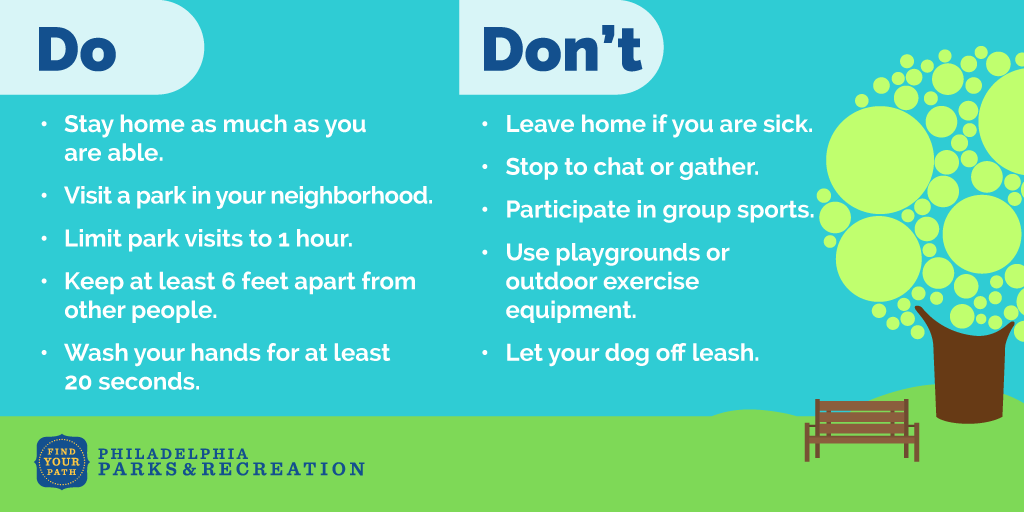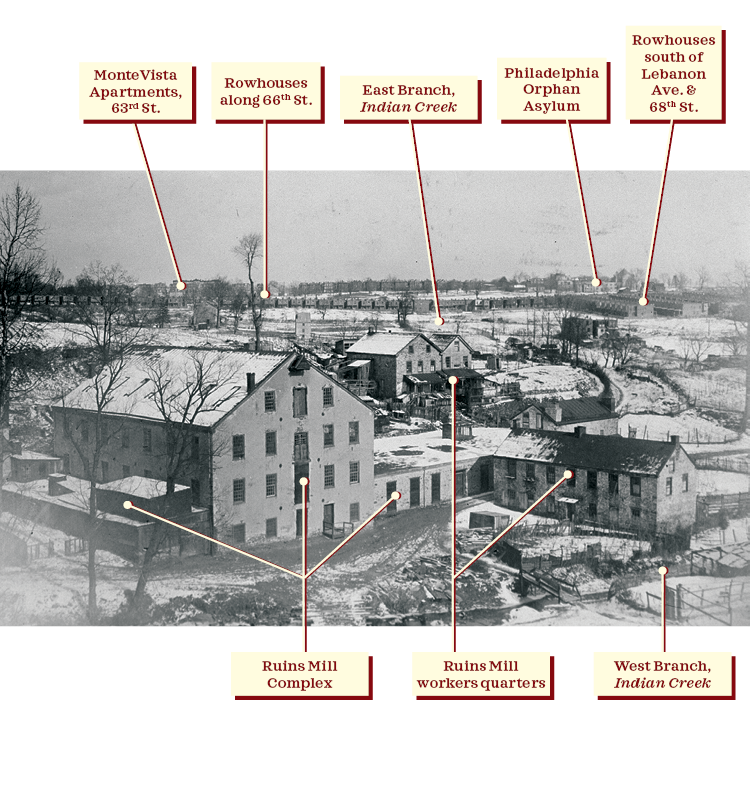For many in Philly, a much-needed silver-lining during these stressful times has been a chance to explore nearby outdoor spaces.
Stay-at-home measures in place since mid-March have made outdoor walks one of the few safe activities, and many Philadelphians today are learning the quietly powerful nature of our parks, trails, and open spaces.
By maintaining the recommended six-foot barrier from other park-goers and carefully washing hands after going out, you can still enjoy the treasured outdoor spaces we have set aside for that very purpose.

This weekend is an especially great time to start exploring and learning: Parks and Recreation and the Fairmount Park Conservancy adapted Love Your Park Week, a normally hands-on green space appreciation week first launched in 2012, into Love Your Park @ Home.
” As bad as things are, try to imagine what life would be right now without our parks… Now it turns out we need our parks like we need food: for basic survival. When the virus passes—and it will—let’s remember it was our parks that enabled us to endure this crisis.” — Inga Saffron, The Philadelphia Inquirer
We’re joining the fun, too
With many of the green spaces we enjoy today first envisioned as natural preserves set aside to protect drinking water quality, a love of parks is in our DNA. The fact that Parks and Recreation is one of our most robust City partners when it comes to pairing renovation needs with our need for green stormwater infrastructure sites doesn’t hurt either.
That relationship was, in part, the inspiration for the Morris Park History and Green Tools Walking Tour, an in-person event originally planned for Love Your Park Week.
We focused on Morris Park because it is rich in historic water connections: the site of two branches of a small stream called Indian Creek, the park’s story encapsulates what happened to some 300 miles of urban streams as industry and development led to degradation. But, it is also a place to see what can happen when we restore streams.

Mills on Indian Creek, circa 1915, where Morris Park now stands. This photo showcases the transition from farmland to factories as row homes advance on the periphery. Credit: PWD Archives
And, in the latest chapter, Morris Park is also in the process of having Green City, Clean Waters green infrastructure installed. When completed, rain gardens and other systems that harness nature to manage stormwater will help to keep more than 142,000 gallons of polluted runoff out of local waterways every time we get an inch and half of rain.
That means, in addition to beautifying Morris Park, the new green tools could soak up roughly 6.5 million gallons of stormwater every year, helping water quality in the Cobbs Creek watershed and Delaware River.
Originally, our Love Your Park event was to be led by our very own Philadelphia Water Department historian (and underground sensation), Adam Levine. A long-time figure in the Philadelphia history community, Levine made a splash in West Philly last summer with a packed talk at USciences on the history of Mill Creek following a sewer “sinkhole” that knocked out the Baltimore Ave. trolley for several weeks.
Storytime!
While COVID-19 means we won’t be able to give Levine fans the in-person experience they’ve been clamoring for, his knowledge and expertise shine through in a fun new online “storymap” created to go along with the walking tour.
Our storymap is created using ArcGIS, which is a type of mapping software that helps “create inspiring, immersive stories by combining text, interactive maps, and other multimedia content” that can be shared locally or globally.
The goal is to give viewers like you the chance to learn the deep history of this green space from the comfort (and safety) of home.
The new Morris Park storymap showcases the park area’s transition from native woods to farmland, then into an industrial complex, and finally into the space we know best—parks and recreation land for the community (and an urban oasis for native plants and animals.)
Both the in-person tour—which we still hope to host in the future—and storymap are designed to communicate the history and value of urban green space while showcasing infrastructure details that viewers/visitors likely would overlook. Stormwater management is a prominent feature.
Along with historic images and descriptions, viewers will learn about specific aspects of the park hidden in plain sight, such revealing the mystery of the raised manholes along the ‘North-South’ path (stretching from the guardhouse to Papa Playground) and what that could have meant for neighbors of the park in the early 1900s.
Check out the new Morris Park storymap!
Current Work: Under Construction
Upon arriving at Papa Playground, you may notice an abandoned construction site. This is the space where new rain gardens are being constructed.
Because of the directive from Governor Wolf on March 19, 2020 ordering the stoppage of all non-emergency construction jobs due to the COVID‑19 emergency, the Philadelphia Water Department stopped its work for the project at Morris Park.
PWD is now in the process of resuming work at approved project worksites, following state permissions. While Morris Park (including GSI at Papa Playground) is not approved to resume work yet, the project is in line to restart and crews will follow COVID-19 safety protocols once resuming work. Those who sign up for PWD email/text updates with a 19151 ZIP code will get an alert when construction resumes, and we will also post to the PWD Construction page and local Nextdoor notifications.
Check out this short animation to learn how green tools work, and see the rain garden diagram below for more details about what to expect at Papa Playground.
If you choose to check out Morris Park in-person, please adhere to PPR’s recommendations on safely visiting public green spaces during this time.
Be on the lookout for native plants, animals, fungi, or insects. To identify these natural neighbors, try using the iNaturalist app while hiking. The data collected will help local wildlife specialists learn more about urban wildlife inside the park.
To learn about other green stormwater infrastructure (GSI) projects being planned for this region, take a look at our Big Green Map to locate more and/or contact the West Philadelphia green outreach specialist Dan Schupsky.
Check out the Cobbs Creek GSI virtual walking tour storymap to explore other green tools constructed south of Morris Park that are working hard to protect this special watershed.
Stay Tuned
A walking tour of Morris Park, hosted by PWD, Friends of Morris Park, and Parks & Recreation, will be rescheduled after state stay-at-home orders are lifted.
Sign up for updates from PWD, including information about the rescheduled walking tour
To receive updates from the Friends of Morris Park, sign up to receive their e-newsletter.
If you decide to venture out into the urban wild, please do your best to support local green spaces during the Love Your Park @ Home week by tagging @PhilaParkandRec and @PhillyH2O.

